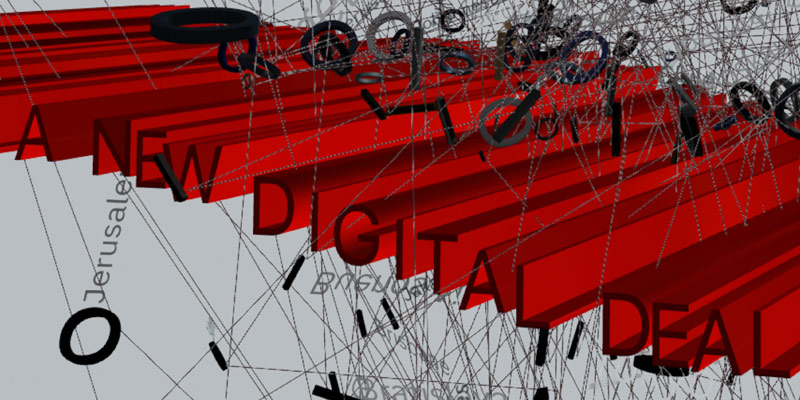Life Art

Artistic Journalism Tour led by Karen Palmer
Karen Palmer (UK)
The information and surveillance society, climate change, human rights issues... Artists are addressing social questions in an artistic way and asking us questions in the form of their artworks. It can be called artistic journalism. In this tour, we will take a look at some of the prize-winning works from the Prix Ars Electronica 2021 that address journalism from an artistic perspective and method, and talk to the artists about their work.

CyberArts 2021: Artificial Intelligence & Life Art
Die neue Kategorie Artifical Intelligence & Life Art widmet sich der künstlerischen Praxis und dem künstlerischen Denken in allen Bereichen der Künstlichen Intelligenz und der Life Sciences. Ausgezeichnet wurden Kunstwerke, die sich kritisch und anspruchsvoll mit Biotechnologie, Gentechnik, Biowissenschaften sowie mit Robotik und Kinetik, maschinellem Lernen, Deep Learning und jeder anderen Form der Forschung zu Künstlicher Intelligenz beschäftigen.
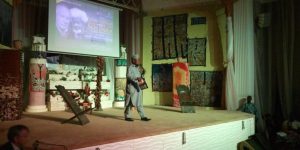
What The Hunter Saw
Makinde Adeniran (NG), Jerry Adesewo (NG)
The Abuja ARS Garden will also feature a premiere of What the Hunter Saw, a play by Makinde Adeniran, directed by Adesewo Fayaman Bay will be part of our offerings during the festival. Hunter Sho is the lead character in What the Hunter Saw, a character which depicts the personality of one of the world’s greatest literary giants of all time, Nigeria’s Professor Wole Soyinka.
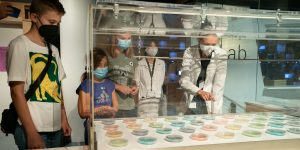
Bio Ink Experience
Ars Electronica Futurelab (AT)
In der Natur leben wir mit vielen Organismen zusammen und interagieren mit ihnen. Die Arbeit mit ihnen hilft uns, andere Wesen und uns selbst besser zu verstehen. Unsere Bio-Ink-Forschung überwindet digitale und menschenzentrierte Technologien, indem wir das Konzept lebender Tinte erforschen, die in einer kreativen Symbiose mit der Natur und anderen Organismen frei wächst. Im Rahmen der Forschung werden biologische Tinten aus verschiedenen Mikroorganismen im Biolabor hergestellt.
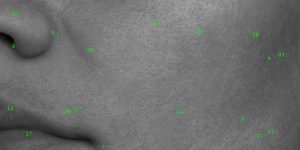
BIAS ONLINE
Science Gallery Dublin (IE) featuring work by Mushon Zer-Aviv (IL), Libby Heaney (GB), Johann Diedrick (US), and Noah Levenson (US)
Explore AI, ethics, trust and justice by spending some time navigating and interacting with a brand-new exhibition platform designed exclusively by Science Gallery Dublin for online use.
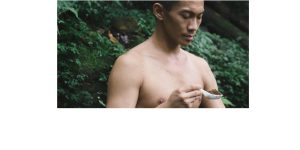
Earth Tour
André Chiang (TW), Billy Chang (TW), Hsin-Chien Huang (TW), Wen-Chieh Chang (TW)
The plants growing on earth nourish us, and someday we will all return to the ground. It is where life ends as well as begins. Soil is no doubt the stop for the transition of life. Thus, in the program “Earth Tour”, viewers will participate in a performance art called “Taste Soil”, which intends to rethink the relationship between humans and land by means of “eating.”
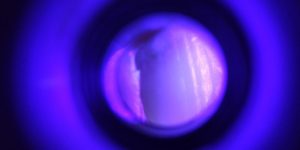
Zoom on matter. Ethnography of flattened embodiment
Karolina Żyniewicz (PL)
The pandemic years 2020/2021 could be called the era of flattened bodies. We got used to experiencing each other framed by the rectangular windows of various communication platforms. Where is the body? Is it still important?
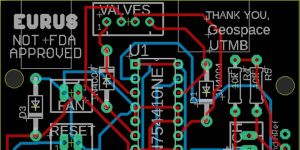
Eurus
Aisen Caro Chacin (US/ES/VE), Christopher Zahner (US)
Als Reaktion auf den weltweiten Mangel an Beatmungsgeräten haben wir Eurus entwickelt, ein Notfallbeatmungsgerät, das auf Widerstandsfähigkeit, Anpassungsfähigkeit und Patientensicherheit ausgelegt ist und mit vorrätigem Krankenhausmaterial und gängigen elektronischen Komponenten betrieben werden kann. Es wurde als kostengünstiges Automatisierungsgerät für manuelle Wiederbelebungsgeräte konzipiert, das durch eine Blutdruckmanschette betätigt wird und eine automatische und unterstützende / kontrollierte Notfallbeatmung bietet, die von Krankenhäusern in einer Notsituation leicht montiert werden kann.
